Keywords
|
| Microstrip Antenna, Monopole, Slot, Ominidirectional, Parasitic Strip |
INTRODUCTION
|
| Microstrip antennas are popular because of compact size, simple in design, low cost and capable of operating more than one band of frequencies. Owing to its thin profile, light weight, low cost, planar configuration and easy fabrication, the microstrip antenna is the better choice for these requirements. Design and development of microstrip antenna operating for desired frequency bands and rejecting unused band is the better choice for specific applications in microwave communication. Number of investigations has been reported in the literature for the design and development of notchband operation [3-9]. Further most of the antennas presented in the literature are either complex in their structure or bigger in size and hence require carful manufacturing procedure than that of the regular microstrip antenna for practical applications. In this study we have demonstrated a simple technique to achieve dual notch-band operation and their control by varying the radius of circular parasitic strip of rectangular monopole microstrip antenna. |
DESIGN OF ANTENNA GEOMETRY
|
| The art work of the proposed antenna is sketched by using computer software Auto-CAD to achieve better accuracy and is fabricated on low cost FR4-epoxy substrate material of thickness of h = 0.16 cm and permittivity ?r = 4.4. |
| Figure 1 shows the top view geometry of hexagonal shaped slot with circular parasitic strip rectangular monopole microstrip antenna (HCRMA). In Fig.1 the area of the substrate is L ? W cm. On the top surface of the substrate a ground plane of height which is equal to the length of microstripline feed Lf is used on either sides of the microstripline with a gap of 0.1 cm. On the bottom of the substrate a continuous ground copper layer of height Lf is used below the microstripline. The HCRMA is designed for 3 GHz of frequency using the equations available for the design of conventional rectangular microstrip antenna in the literature [2]. The length and width of the rectangular patch are Lp and Wp respectively. The feed arrangement consists of quarter wave transformer of length Lt and width Wt which is connected as a matching network between the patch and the microstripline feed of length Lf and width Wf. A semi miniature-A (SMA) connector is used at the tip of the microstripline feed for feeding the microwave power. In Fig.1 a hexagonal slot with circular parasitic strip is loaded on the radiating patch of vertices X and radius of circular parasitic strip R respectively. |
| Figure 2 shows the geometry of modified hexagonal shaped slot with circular parasitic strip rectangular monopole microstrip antenna (MHCRMA). In this figure radius of circular parasitic strip is changed to 0.4 cm. The other geometry of Fig. 2 remains same as that of Fig.1. The design parameters of the proposed antenna is shown in Table 1 |
EXPERIMENTAL RESULTS
|
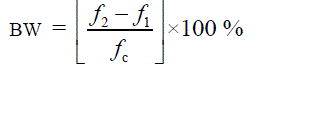 (1) (1) |
| were, f1 and f2 are the lower and upper cut of frequencies of the band respectively when its return loss reaches – 10 dB and fc is the center frequency of the operating band. From this figure, it is found that, the antenna operates between 7 to 16 GHz and gives three resonant modes at f1 to f3, i.e. at 7.37, 8.71, and 15.51 GHz respectively and two notch-bands from 7.51 - 8.41 and 10.08 - 10.62 GHz. The magnitude of experimental -10 dB bandwidth measured for BW1 to BW3 by using the equation (1) is found to be 330 MHz (4.49 %), 1.67 GHz (18.06 %), and 5.38 GHz (40.42%) respectively. |
| The multi mode response of is due to the different surface currents on the patch. The fundamental resonant frequency mode shifts from 3 GHz designed frequency to 7.37 GHz due to the coupling effect of microstripline feed and top ground plane of HCRMA. |
| Figure 4 shows the variation of return loss verses frequency of MHCRMA. It is seen from this figure that, the antenna operates for three bands of frequencies BW4 to BW6. The magnitude of these operating bands measured at BW4 to BW6 is found to be 640 MHz (8.59 %), 1.80 GHz (19.56 %) and 5.51 GHz (41.60 %) respectively. Further from Fig.4 it is clear that, the MHCRMA is capable of widening each operating band when compared to the operating bands BW1 to BW2 of HCRMA. The antenna also retains two notch-bands but the notch-bands between BW4 to BW5 and BW5 to BW6 have been reduced to 6.59 and 3.78 % when compared to the notch-band between BW1 to BW2 and BW2 to BW3. Hence by changing the radius of circular parasitic strip on the patch is effective in controlling the notch-band operation of the antenna. |
| The gain of the proposed antennas is measured by absolute gain method. The power transmitted „Pt? by pyramidal horn antenna and power received „Pr? by antenna under test (AUT) are measured independently. With the help of these experimental data, the gain (G) dB of AUT is calculated by using the formula, |
 (2) (2) |
| where, Gt is the gain of the pyramidal horn antenna and R is the distance between the transmitting antenna and the AUT. Using equation (2), the maximum gain of HCRMA and MHCRMA measured in their operating bands is found to be 9.70 dB and 11.86 dB respectively. Hence the decease of radius of circular parasitic strip also enhances gain of the antenna. |
| The co-polar and cross-polar radiation pattern of HCRMA and MHCRMA is measured at 8.45 and 7.41 GHz. The typical radiation patterns measured at 8.45 and 7.41 GHz are shown in Fig 5 to 6 respectively. The obtained patterns are ominidirectional in nature. |
CONCLUSION
|
| From the detailed experimental study, it is concluded that, the HCRMA with microstripline feed have been designed for dual notch-band operation. The antenna operates for two bands of frequencies in the range of 7 to 16 GHz. If the radius of circular parasitic strip is changed to 0.4 cm, the antenna operates again for three bands but reduces the magnitude of each notch-band frequency range which causes enhancement in the operating bands. The proposed antennas are simple in their structure and they use low cost substrate material FR4. Both antennas give ominidirectional radiation characteristics inspite of reduction in the notch-bands and enhancement in the gain. With these features the proposed antennas may find applications in microwave communication systems operating in the frequency range of 7 to 16 GHz. |
ACKNOWLEDGEMENTZ
|
| The authors would like to thank Dept. of Sc. & Tech. (DST), Govt. of India. New Delhi, for sanctioning Vector Network Analyzer to this Department under FIST project. The authors also would like to thank the authorities of Aeronautical Development Establishment (ADE), DRDO Bangalore for providing their laboratory facility to make antenna measurements on Vector Network Analyzer. |
Tables at a glance
|
 |
| Table 1 |
|
| |
Figures at a glance
|
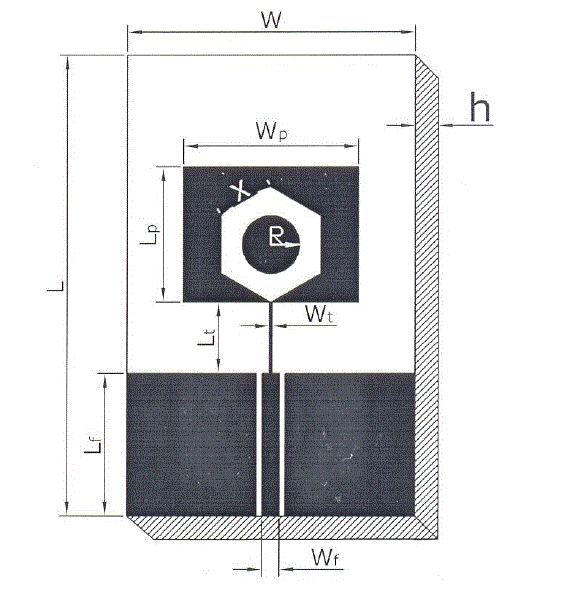 |
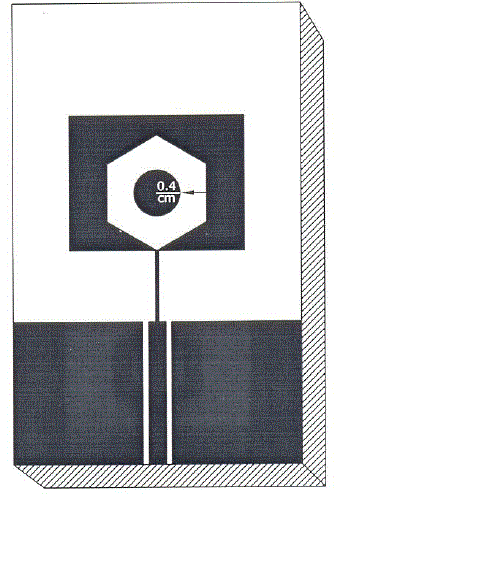 |
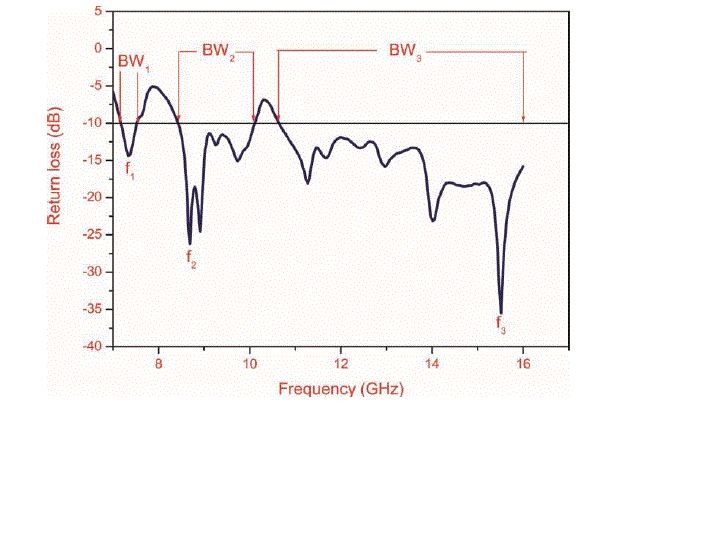 |
| Figure 1 |
Figure 2 |
Figure 3 |
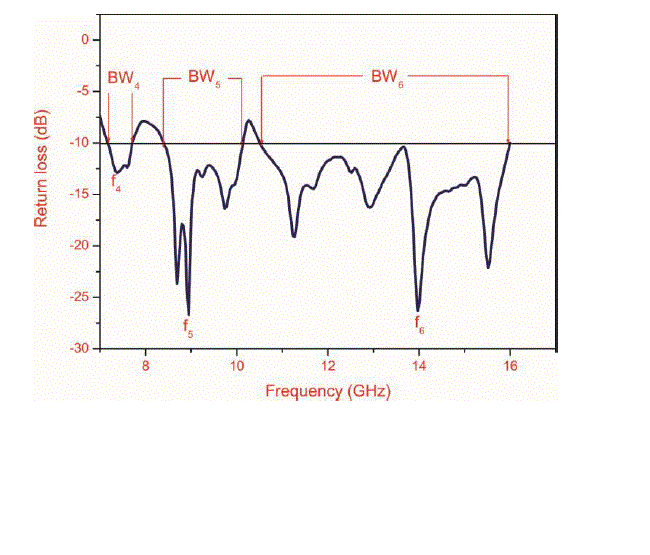 |
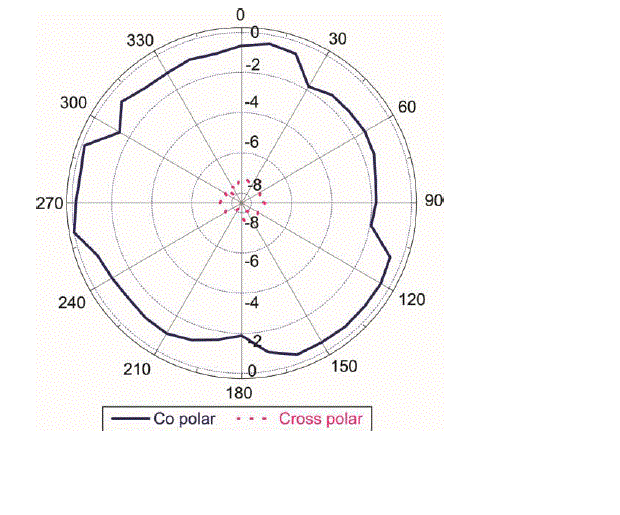 |
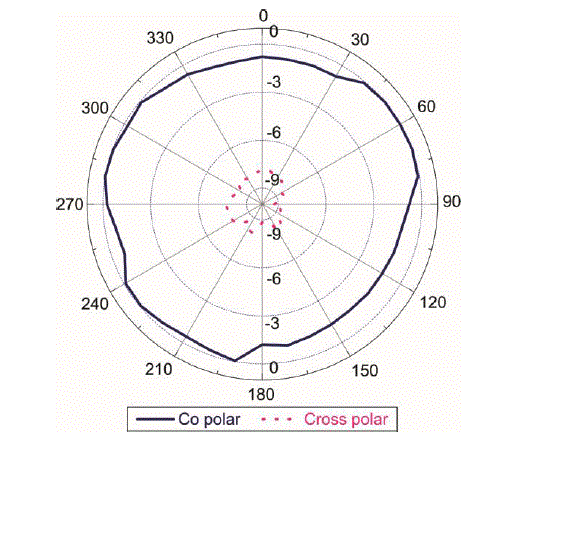 |
| Figure 4 |
Figure 5 |
Figure 6 |
|
| |
References
|
- Constantine A. Balanis, Antenna theory analysis and design, John Wiley, New York, 1997.
- I. J. Bahl and P. Bharatia, Microstrip antennas, Dedham, MA: Artech House, New Delhi, 1981.
- Li-Xian Li, Shun-shiZhong and Min-Hua Chen, “Compact band-notched ultra-wideband antenna using defected ground structure” Microwave and Optical Technology Letters, vol. 52, no.2, pp.286-289, February 2010.
- YadongYan,Xilang Zhou, Linsheng Wu and Wenyan Yin, “A novel microstip-fed dual band-notched wideband antenna with defected ground structure” Microwave and Optical Technology Letters, vol.53, no.4, pp.704-706, April 2011.
- M. Veereshappa, S. N. Mulgi and S. K. Satnoor, “A novel design and development of simple monopole antenna for UWB operation” Microwave and Optical Technology Letters, vol.54, no.4, pp.953-955, April 2012.
- M. Naser-Moghadasi, L. Asadpor and B. S. Virdee, “ Compaect Ultra-Wideband slot antenna with band-notch property” Microwave and Optical Technology Letters, vol. 54. No.8, pp.1829-1832, August 2012.
- HuiqingZhai, Jinxia, Ou, Tong Li, Guihong Li Long Li and Changhong Liang, “A compact ultra-wideband antenna with two band notches” Microwave and Optical Technology Letters, vol.55, no.3, pp.583-586, March 2013.
- Mohammad Ojaroudi and Nasser Ojaroudi, “Low profile slot antenna with dual band-notched function for UWB systems” Microwave and Optical Technology Letters, vol 55, no.5, pp.951-954, May 2013.
- JieXu, DongyaShen, JianfengZheng, Xiupu Zhang and Ke Wu, “A novel miniaturized UWB antenna with four band-notches” Microwave and Optical Technology Letters, vol. 55, no.6, pp.1202-1206. June 2013.
|